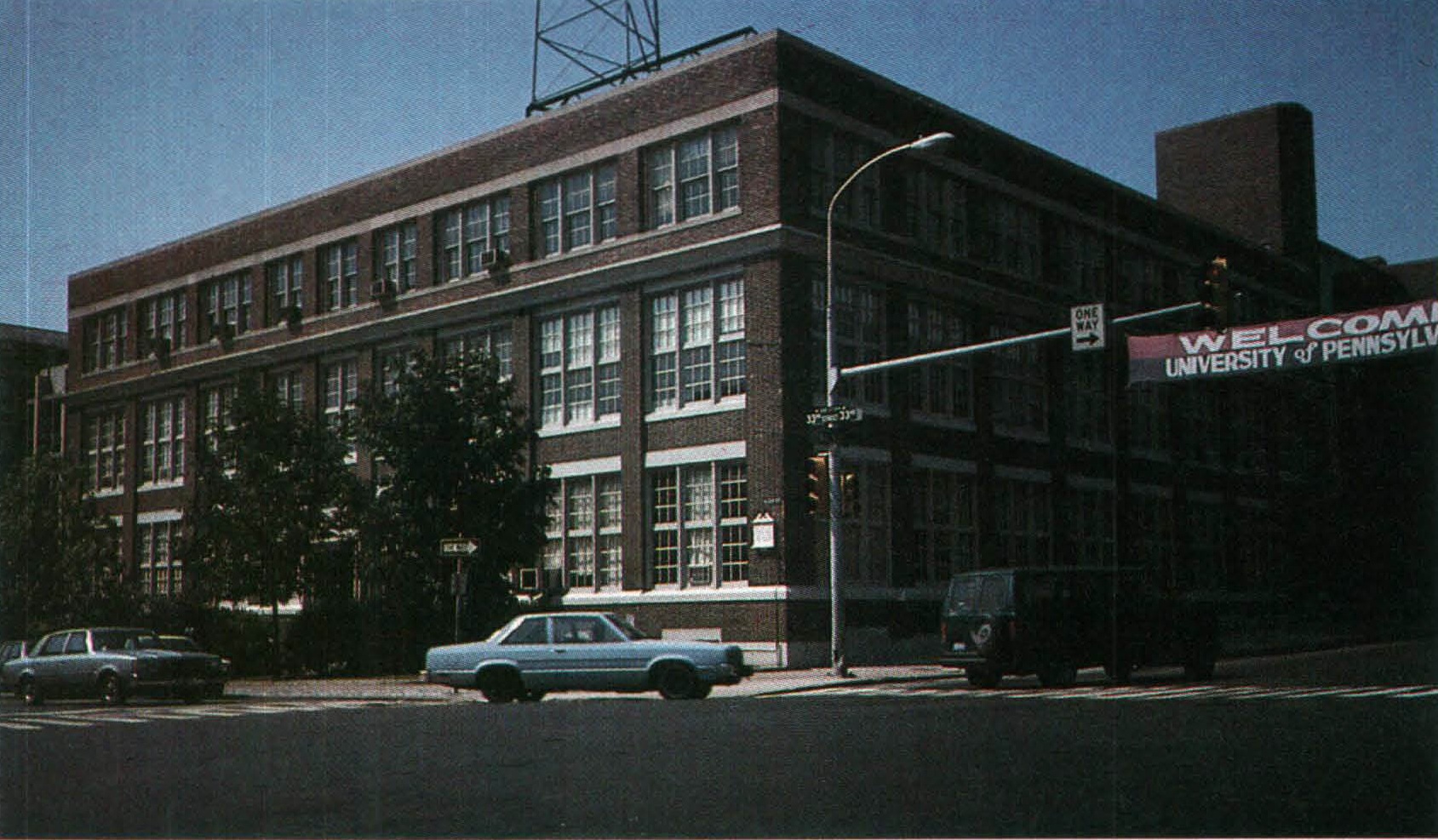The Moore School of Electrical Engineering occupies a boxy three-story brick building on the sprawling campus of the University of Pennsylvania. A former musical instrument factory, the building was taken over by the university in 1926, and it was there, in a large room on the ground floor, that ENIAC was built. Compared to most engineering schools, the Moore School was rather young, having been founded in 1923 with a bequest from a wealthy Philadelphia industrialist, Albert Fitler Moore, whose family had made a fortune manufacturing wire stays for bonnets and hoop skirts. (The Massachusetts Institute of Technology, the dean of American engineering schools, was established in 1861.) Under Dean Harold Pender, the Moore School assembled a bright and aggressive faculty – academic entrepreneurs, as one of its professors called the group – who were determined to raise the institution to the top ranks of American engineering schools.

Aside from MIT, Penn was the only university in the country with a differential analyzer. In 1934, the Moore School, convinced that such a machine was necessary for further advances in electrical engineering, constructed an analyzer under Vannevar Bush’s direction. Unlike the MIT model, which was privately financed, Penn’s machine was paid for by the government. The War Department endorsed the project (and the Civil Works Administration, one of Roosevelt’s alphabet agencies, picked up the tab) on the condition that the new analyzer’s plans be used to build a sister machine for the Aberdeen Proving Ground, in Maryland, which was run by the Army’s Ordnance Department. The agreement, reached at a time when few military-university contracts existed, forged a link between the Moore School and the Ordnance Department that paved the way for the development of ENIAC.
When the United States entered the war, the Ordnance Department enlarged its staff at Aberdeen. In short order, the department’s Ballistic Research Laboratory (BRL) trained about one hundred human computers, mostly women college graduates with an aptitude for math, to calculate ballistic firing tables, which gave gunners the necessary information to aim their weapons properly. At first, the Aberdeen computers, who used the differential analyzer and ordinary desk calculators, were sufficient for the workload. But as war production mushroomed and growing numbers of new guns left the factories, the BRL began to fall behind schedule. In an effort to catch up, it established a computing substation at the Moore School. It requisitioned the Moore School’s analyzer and gave the school another contract, this one to recruit and train another hundred computers. Yet the BRL still couldn’t keep up with the demand for new firing tables. Since a gun without a firing table is almost as useless as a computer without a program, the situation was quite alarming.
In order to hit a target, a gunner must aim his or her weapon in the right direction and raise the barrel to the proper angle. Many factors go into the second decision, the most important being the range and altitude of the target. Other variables, such as air temperature and wind speed, also must be taken into account. Since a gunner can’t very well sit down on the battlefield and figure out the differential equations indicating the right angle of fire, the army thoughtfully provides a pamphlet – a firing table – listing all the relevant factors and showing the correct angle of fire for a given shell in a given gun. The gunner looks up the information in the table, aims the barrel, and fires away.
Before the invention of the digital electronic computer, these tables were terribly difficult to make. For only the most basic factors, altitude and range, the BRL had to calculate approximately two to four thousand trajectories for each pair of projectile and gun. And that was only the beginning, since a table for a typical gun like the 155-mm. Long Tom involved many other factors. In general, the BRL computed the basic factors on a differential analyzer, which could calculate a single trajectory in fifteen to thirty minutes but required one or two hours of set-up time per table. Since it wasn’t practical to readjust the analyzer every time a new variable had to be calculated, the bulk of the BRL’s work was relegated to human computers. (Remember, the analyzer was an analog computer, and its gears and rods had to be rearranged whenever a new equation was processed.) A skilled human computer, using an electromechanical desk calculator, took about three days to calculate a single trajectory, and the BRL as a whole needed a couple of months to compile a comprehensive table.
By 1943, the BRL was dangerously behind schedule. “In the specific case of sidewise firing from airplanes,” wrote Professor John Grist Brainerd, the Moore School’s director of war research, in a secret memo to Dean Pender, “construction of directors for guns has been held up several months because it has been a physical impossibility to supply to the manufacturers the necessary ballistic data.” Under the circumstances, the BRL was willing to do almost anything to alleviate the crisis, including spending half a million dollars for the construction of a revolutionary electronic calculator at the Moore School. ENIAC was not the product of a scientist or engineer’s frustration with solving equations with mechanical calculators, but of a military imperative during a national crisis.